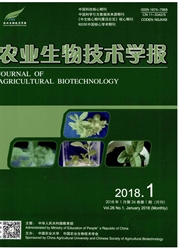

 中文摘要:
中文摘要:
利用酿酒酵母(Saccharomyces cerevisiae)的同源重组系统进一步克隆了缺失近膜区的水稻(Oryza sativa)类受体激酶序列,表达了激酶的GST融合蛋白质,进行了激酶的自我磷酸化活性分析。结果显示,缺失近膜区对激酶蛋白质的表达没有明显影响,但是对其磷酸化活性检测发现,17个缺失近膜区的激酶中有14个激酶的活性丧失,按照PlantsP网站的分类,这14个激酶分别属于第一类跨膜受体激酶和非跨膜相关类受体激酶中的Receptor like cytoplasmic kinaseⅦ家族、CRPK1like kinase(type1)家族、S-domain kinase(type2)家族、Legume lectin domain kinase家族和Wall associated kinase家族,另外3个是推测的类受体激酶。表明近膜区对植物类受体激酶的活性具有重要影响。
 英文摘要:
英文摘要:
To investigate the effect of juxtamembrane region on the autophosphorylation activity of rice receptor-like kinases, truncated kinase sequences without juxtamembrane region were cloned by Saccharomyces cerevisiae homology recombination system. GST-kinase fused proteins were expressed, and their autophosphorylation activities were analyzed. The results showed that the absence of juxtamembrane region did not affect the expression of kinase proteins, while 14 out of 17 truncated kinases abolished the activity as detected by autophosphorylation. The 14 kinases belongs to the first class (Transmembrane receptor kinase and related non-transmembrane kinases) on PlantsP (http://plantsp.genomics.purdue.edu/), receptor-like cytoplasmic kinase Ⅶ, CRPK1 like kinase (type 1), S-domain kinase (type 2), Legume lectin domain kinase, wall-associate kinase families and 3 putative receptor protein kinases. The results of this experiment indicate that the juxtamembrane region may play vital role for the regulation of plant receptor-like kinases.
 同期刊论文项目
同期刊论文项目
 同项目期刊论文
同项目期刊论文
 期刊信息
期刊信息
